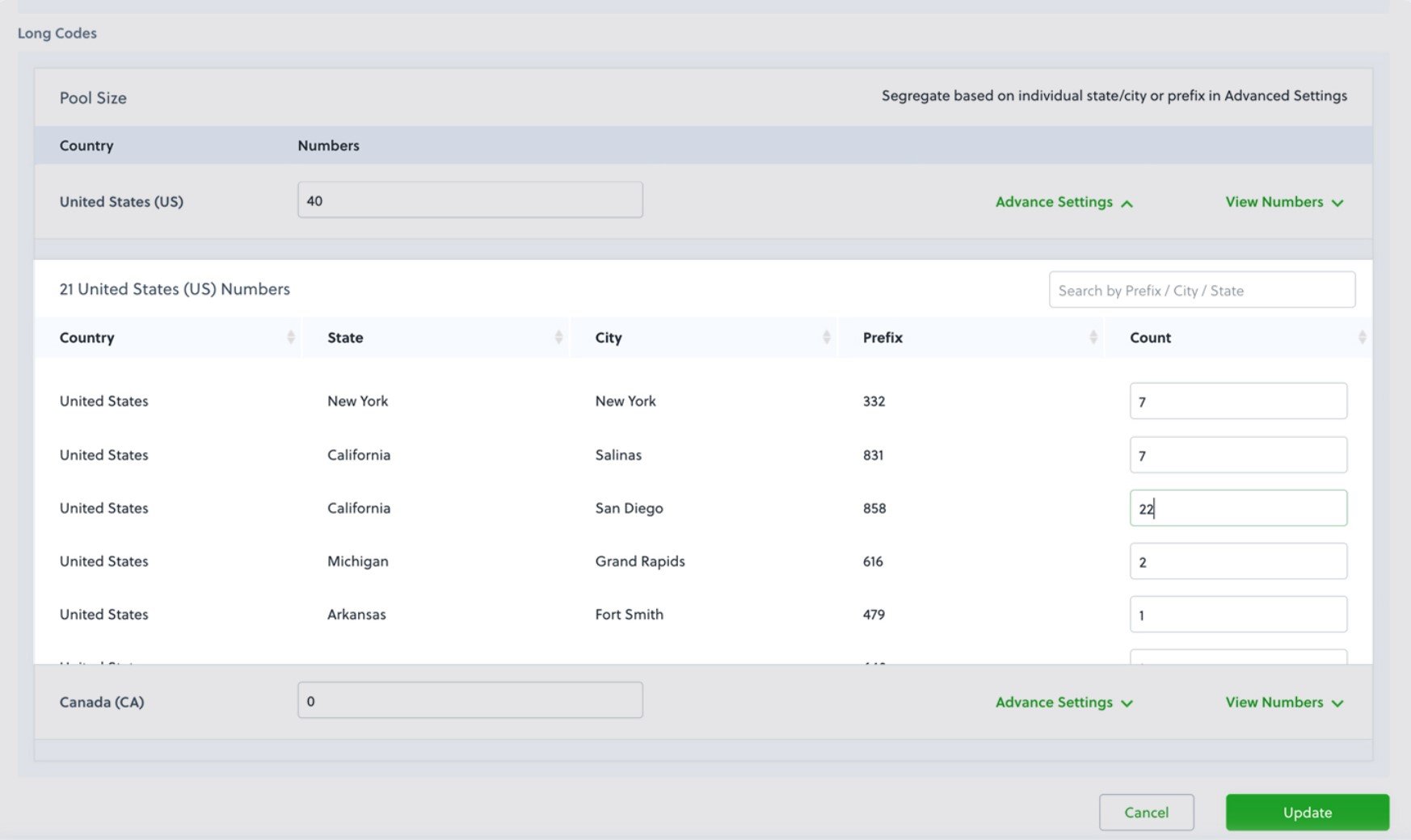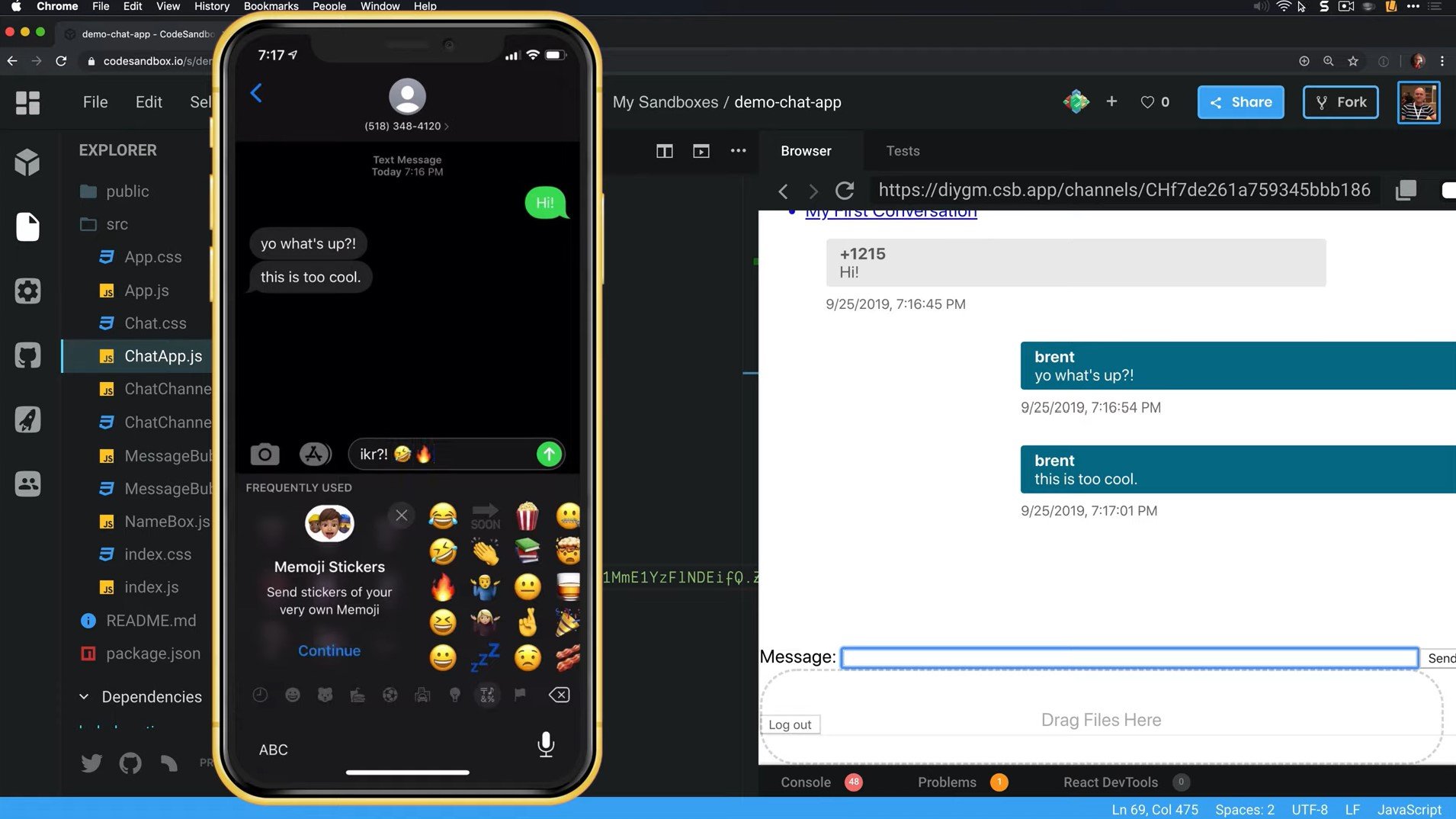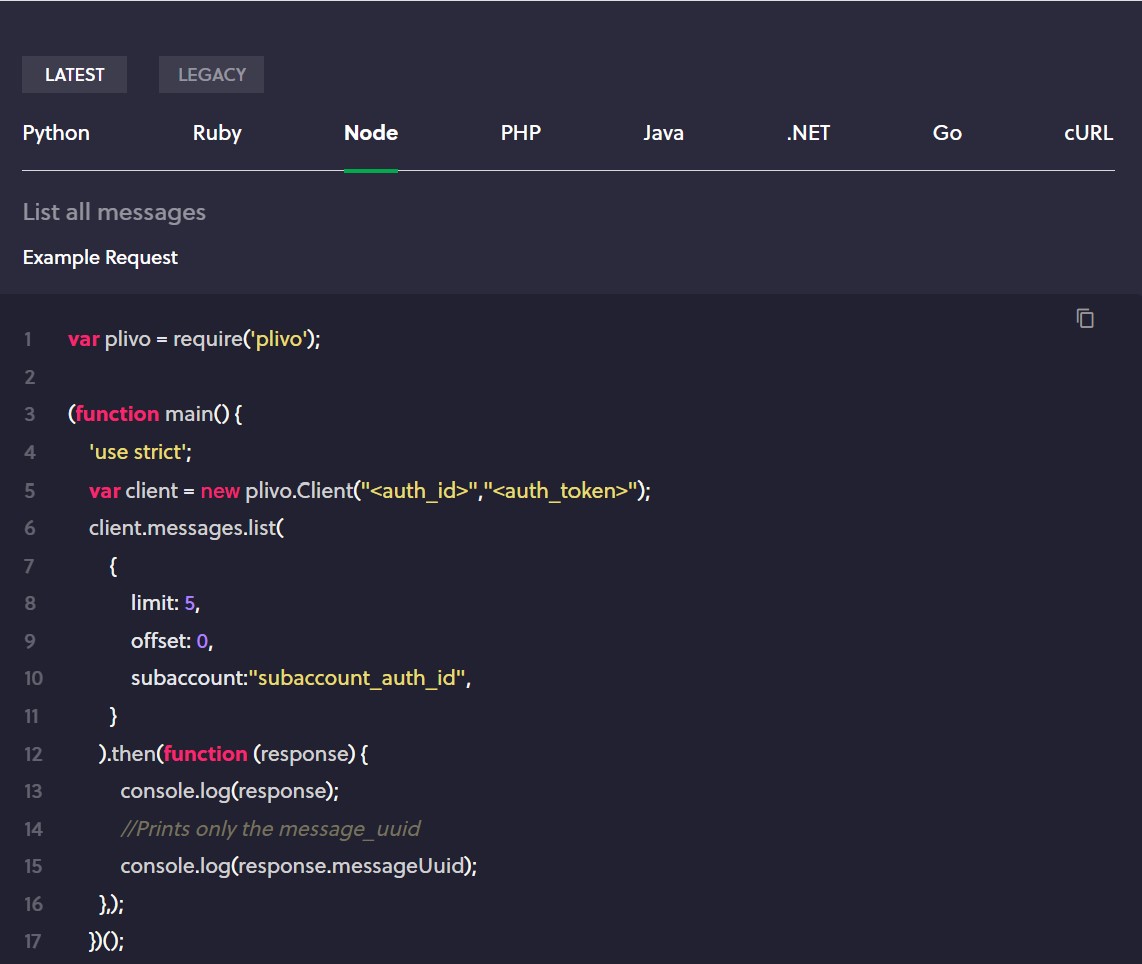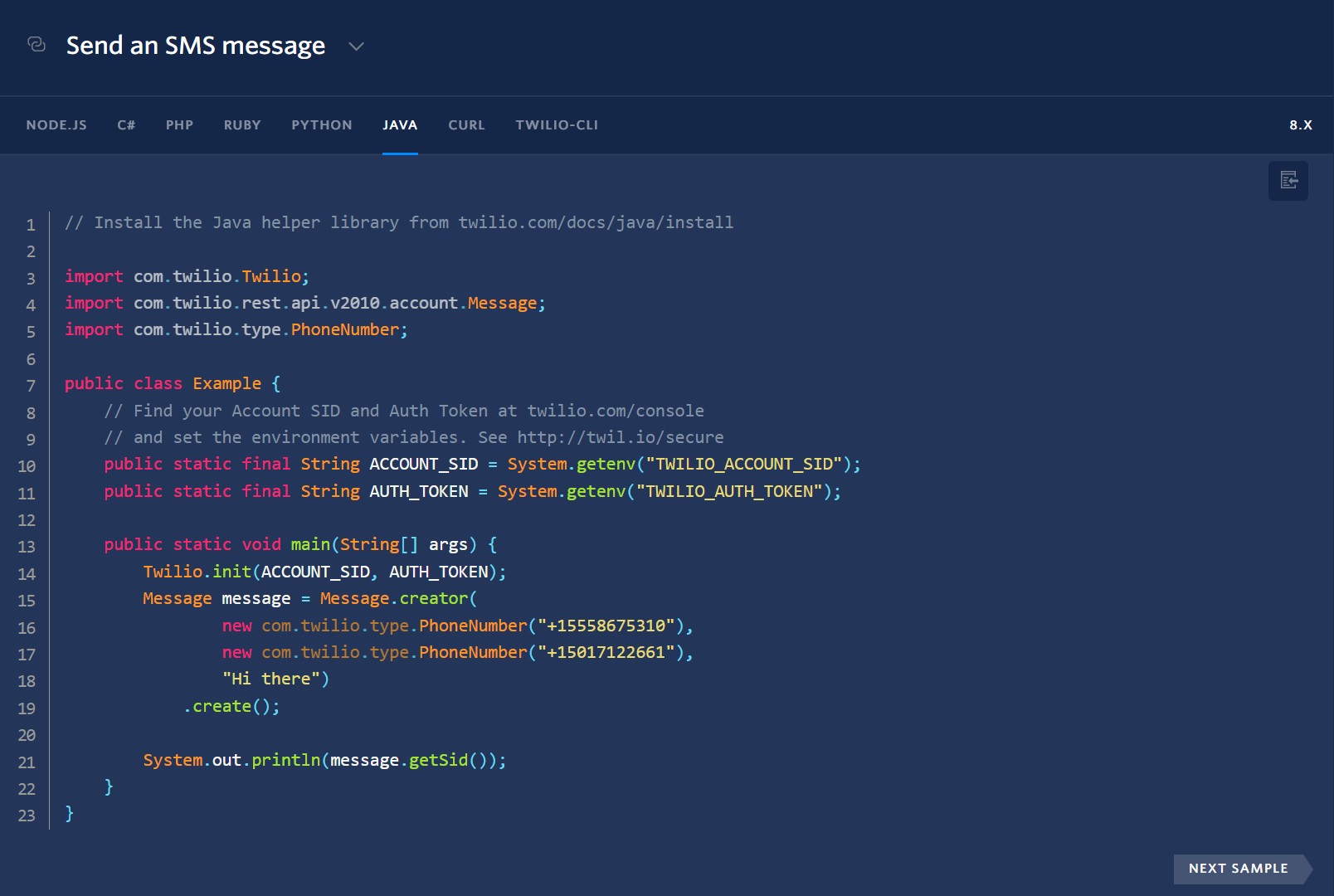Twilio and Plivo are CPaaS providers that offer communication APIs for companies to integrate voice telephony and messaging into their applications.
While both API platforms offer messaging and SMS APIs with SDKs, no-code flow builders, and built-in routing features, they differ in channel offerings, use cases, and pricing.
This article will compare Twilio vs Plivo, outlining their differences, similarities, features, pricing, pros, and cons.
Jump to↓
- Plivo vs Twilio Overview
- What is Plivo?
- What is Twilio?
- Plivo vs Twilio: What is the Difference?
- Plivo vs Twilio: Feature Comparison
- Plivo vs Twilio: Pricing
- Plivo vs Twilio: Pros & Cons
- Which Provider is Best for Your Business?
- FAQs
Plivo vs Twilio Overview
| Plivo | Twilio | |
| Key Features | - No-code flow builder
- Programmable messaging APIs - Massive SMS carrier network - Privacy and data protection |
- No-code flow builder
- Programmable messaging APIs - Massive SMS carrier network - Conversational messaging APIs |
| Available Messaging Channels | - SMS
- MMS |
- SMS
- MMS - Web chat - Facebook Messenger - Google’s Business Messenger |
| Pricing | Outbound SMS: $0.0045 to $0.0055
Inbound SMS: Free to $0.0055 |
Outbound SMS: $0.0079
Inbound SMS: $0.0075 |
| Best for | SMS-focused companies seeking affordable, programmable messaging features for marketing use cases | Companies seeking multichannel messaging to support marketing and customer-support use cases |
What is Plivo?
Plivo is a cloud communications platform offering the infrastructure, SMS and voice APIs, software development kits (SDKs), and other tools companies can use to power their apps with VoIP calling and text messaging to over 190 countries.
Plivo’s no-code drag-and-drop flow builder, PHLO, creates programmable messaging sequences, based on triggers, that automate marketing and customer-support use cases.
What is Twilio?
Twilio is a cloud communications platform offering APIs and software for companies to add messaging, voice calls, video, and email into their apps, reaching over 180 countries.
Twilio’s messaging platform includes APIs for programmable messaging via SMS, MMS, and WhatsApp, as well as conversational 1:1 or group messaging and chatbots via web chat, Facebook Messenger, and Google’s Business Messages.
Plivo vs Twilio: What is the Difference?
The difference between Plivo and Twilio is that Plivo only offers programmable SMS APIs, while Twilio also offers conversational messaging APIs with non-SMS channels like web chat, WhatsApp, and Facebook Messenger.
| Differences | Similarities |
| Twilio offers more channels | SMS and MMS APIs |
| Twilio offers two-way conversational messaging, unlocking new use cases | Drag-and-drop flow builder for automated messaging |
| Plivo offers forward SMS to email | Purchase toll-free and local numbers, shortcodes, or port in a pre-existing number and use SIP trunking |
| Plivo covers over 190 countries, while Twilio covers over 180 | Console dashboard to monitor delivery and performance |
Plivo vs Twilio: Feature Comparison
Below, we’ve compared standout features for Plivo vs Twilio.
Plivo No- or Low-Code Flow Builder
Plivo High-Level Objects (PHLO), Plivo’s no-code drag-and-drop editor, designs automated communication flows that combine Plivo’s messaging APIs with in-app functions and triggers.

With PHLO, sequence outbound message APIs based on a trigger–an inbound message or an event in your app, like a product update, new post, or a customer making or canceling an appointment.
Based on these triggers, build automated flows for two-factor authentication (2FA), IVR, bulk SMS, SMS alerts, notifications, auto-responses, and surveys. Create multi-level self-service menus that support thousands of customers at once.
Twilio No- or Low-Code Flow Builder
Twilio Studio, Twilio’s flow builder, uses a similar drag-and-drop canvas to build automated self-service menus that combine Twilio messaging APIs with in-app functions and triggers.

However, Twilio Studio’s widget and trigger capabilities go above and beyond PHLO’s.
Use Twilio Studio to design web chatbots that live inside your company’s mobile or browser app.
The Split Confirmation widget understands advanced customer confirmation responses, using them to carry out complex use cases. Use your app’s database or CRM information to send customers delivery vehicle description info, forward messages from order runners, or confirm an order’s delivery.
Plivo Deliverability, Routing, and Scalability Features
Plivo’s SMS APIs offer routing and message delivery features that help your company scale smoothly within Plivo's network of over 1600 carriers and 99.5% uptime. Manage and monitor the following connectivity features in the Plivo console, Plivo’s developer and administrative dashboard.
- Shortcodes: Use a random or vanity 5-6-digit short code to text customers–improving brand recognition, increasing throughput performance, and strengthening deliverability
- Number pooling: Spread outbound messages across multiple business phone numbers to improve delivery speed
- Conversion API: Plivo’s routing engine receives feedback from your app, making self-adjustments to improve message deliverability
- Message queuing: Use a single API request to send batches of SMS messages, with Plivo-automated queuing
- Real-time route optimization: Plivo's network frequently reroutes data traffic, optimizing delivery rate
Twilio Deliverability, Routing, and Scalability Features
Users can send and monitor messages directly from the Twilio console, Twilio’s dashboard, or integrate messaging with a third-party app–like contact center software–to send messages.
Listed below, Twilio’s deliverability features are available via SMS, MMS, and WhatsApp, from a local or toll-free long-code number or a custom shortcode.
- Super network: Twilio’s messaging network includes over 1500 tier-1 carriers, supporting quick message delivery globally
- Global senders: Localized senders in all 180+ Twilio countries, providing a familiar presence and increasing open rate
- SMS validity period: Predetermine how long queue messages should attempt delivery before failing, to ensure that urgent messages are delivered
- Message fallback: Automatic fallback converts undeliverable WhatsApp and shortcode messages into SMS
- Inbound message routing: Use message webhooks, Twilio Studio flows, or Twilio conversational messaging to improve customer experience by connecting with a preferred agent or messaging channel
- Real-time route optimization
Plivo Analytics and Reporting
In Plivo’s SMS and MMS logs–available in the Plivo console–users can view, search, and sort all messages by the following metrics:
- Date sent
- From (sender)
- To (recipient)
- Destination country
- Current delivery status
- Error or failure reason
- Total amount charged

Each message includes a debug report, displaying transactional details to help developers troubleshoot messaging errors.
Twilio Analytics and Reporting
Twilio Messaging Insights, available in the Twilio console, is a dashboard displaying the following real-time reports:
- Overview: Graph and statistical displays of incoming and outgoing messages, including the percentage of received vs failed messages
- Delivery and errors: Sort delivery data into three views–message delivery sortable by status, message error codes, and total messages divided into delivery categories
- Responses: View inbound messages and customer responses to your outbound messages, including opt-ins, opt-outs, help requests, and “other”

Plivo Message Personalization and Flexibility
Plivo supports GSM and Unicode character formats, allowing communication with customers in any language, including Chinese, Japanese, Arabic, emojis, and symbols. MMS rich communication support enables sending and receiving images, video, and audio. Messages over 160 characters are automatically concatenated–billed as separate messages, but delivered as a single message.
These features personalize customer messaging:
- Sticky sender: Use a consistent phone number or sender/caller ID across interactions with the same customer
- Local match: Plivo autoselects a customer’s local area number for outbound messages, to increase read rates.

Twilio Message Personalization and Flexibility
Twilio’s programmable messaging APIs support sticky sender, local geomatch, long message concatenation, multiple character sets, and rich content–plus the ability to send long messages as MMS to reduce cost. Schedule transactional messages beforehand, predetermining the exact date and time for the API call.
Further, Twilio’s Conversations API really shines in providing an omnichannel messaging experience for one or multiple customers at once. Conversational messaging enables agents and multiple participating customers to maintain one conversation across business SMS, MMS, web chat, WhatsApp, Google’s Business Messenger, and Facebook Messenger.

Conversational messaging API features:
- Delivery statuses and read receipts
- Scalable conversations: from 1:1 up to 1000 participants
- Custom attributes: Customize the sending user, the recipient, and the message itself for full control over what each message says and where it goes
- Scoped webhooks: Easily assign a Twilio Studio flow to a particular conversation to escalate or route it
- Conversation history: Maintain each customer’s conversation history so agents retain full context
- Conversation states and timers: Mark conversations as active, inactive, or closed, and set a conversation expiration timeout.
Plivo Data Compliance and Privacy
Plivo APIs comply with international regulatory standards, protecting user privacy and information while enabling you to scale your applications globally without hassle. Plivo APIs are HIPAA, PCI DSS, SOC2, GDPR, and CPA compliant, making them a good fit for companies sharing sensitive material.
- Message body purging: Plivo never stores message content in any detailed record. All debug logs are automatically cleared after 30 days.
- Smart rate limiting: Each source number limits messaging frequency and throughput to comply with local regulations
- Sensitive data protection: Disable logging and hide phone numbers for sensitive data, such as in the healthcare or other regulated industries
- Automatic opt-out handling: Plivo automatically handles customer opt-out replies, such as “Stop” or “Cancel”
- Message redaction
Twilio Data Compliance and Privacy
Twilio’s programmable and conversational messaging APIs include the following features to protect user privacy and comply with regulations.
- Message redaction: Mask message content and phone numbers’ last 4 digits to protect sensitive information
- Advanced opt-out and opt-in: Customize customer response options across local languages and regulations
Plivo Developer Support Tools
Plivo offers extensive API documentation and copy-pastable sample codes to help developers implement SMS APIs. using server-side SDKs, agents can program in Java, C#, Python, Ruby, Node.js, cURL, PHP, or Golang–taking advantage of reusable API templates to add powerful functionality with minimal code.

Twilio Developer Support Tools
Twilio’s API docs include quick-start guides, code snippets that developers can plug in, tutorials, and a resource library to support building across languages: Java, C#, Python, Ruby, Node.js, PHP, cURL, and Twilio CLI.
Web and mobile SDKs provide a prebuilt framework to help developers build browser and mobile chat applications to connect the end-user frontend interface with your backend database.

Plivo vs Twilio: Pricing
Both CPaaS providers offer pay-as-you-go messaging and monthly phone-number rental options, with volume and committed spend discounts. Twilio charges higher messaging rates than Plivo.
Most SMS carriers add an additional surcharge to send or receive messages.
Plivo Pricing
| Programmable Messaging (Pay-as-you-Go) | ||
| Outbound | Inbound | |
| SMS (per message) | $0.0045 to $0.0055 | $0 to $0.0055 |
| MMS (per message) | $0.0160 to $0.0200 | $0.0080 to $0.0200 |
| Phone Numbers | ||
| 10-digit long codes | $0.50/month | |
| Toll-free numbers | $1.00/month | |
| Shortcodes | Regular: $500/month
Vanity: $1,000/month |
|
While Plivo's native plans do not include WhatsApp or two-way conversational messaging, they offer a separate omnichannel solution, called Contacto, which includes WhatsApp messaging as well as two-way conversational chat.
Twilio Pricing
In addition to the pay-as-you-go programmable messaging rates listed below, Twilio’s conversational messaging APIs cost $0.05/month per active user and $0.25/month per GB of storage.
| Programmable Messaging (Pay-as-you-Go) | ||
| Outbound | Inbound | |
| SMS (per message) | $0.0079 | $0.0075 |
| MMS (per message) | $0.0200 | $0.0100 to $0.0200 |
| Phone Numbers | ||
| 10-digit long codes | $1.00/month | |
| Toll-free numbers | $2.00/month | |
| Shortcodes | Regular: $500/month
Vanity: $1,000/month |
|
Plivo vs Twilio: Pros & Cons
Plivo Pros
- Affordable pricing
- Built-in customer personalization automations like sticky sender and local match
- Phone number masking and routine message-body purging to protect sensitive user data
Plivo Cons
- API channels are limited to just SMS and MMS–no WhatsApp, social media, or web chat
- Only supports programmable messaging–not conversational two-way messaging that embeds into your mobile (iOS and Android) or browser app
- Doesn’t allow use cases like chatbots or multichannel customer support
Twilio Pros
- Twilio Studio enables diverse use cases, like curbside alerts and chatbots that live in mobile and browser apps
- Supports web chat and Facebook Messenger with conversational messaging
Twilio Cons
- More expensive than many Twilio alternatives, despite the fact that many competitors (like Vonage Nexmo or Bandwidth) match Twilio’s programmable features
- Twilio analytics are limited to message delivery status and troubleshooting–no multichannel usage data
Which Provider is Best for Your Business?
Twilio is best for companies that want to integrate not only programmable messaging APIs, but conversational messaging where agents can provide omnichannel customer support through web chat and Facebook Messenger. Companies who want to build multichannel chatbots or provide ETA alerts, especially those with inexperienced developers, will appreciate the low-code Twilio Studio.
Plivo makes a great fit for SMS-focused companies and startups seeking a more affordable messaging option without compromising critical use cases. Despite a cheaper price tag than Twilio, Plivo’s APIs and flow builder support SMS marketing campaigns and all kinds of customer alerts.



